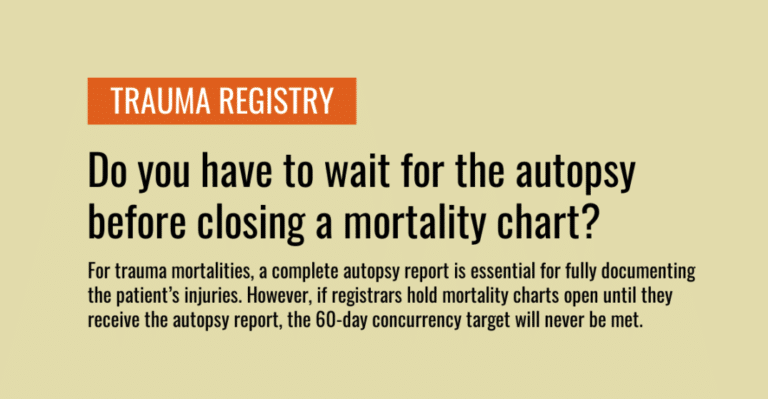For trauma mortalities, a complete autopsy report is essential for fully documenting the patient’s injuries. However, if registrars hold mortality charts open until they receive the autopsy report, the 60-day concurrency target will never be met.

Recommendation
When abstracting a mortality, fill in as many fields as possible and then mark the chart complete. When the autopsy report arrives, update the chart and resubmit it to the National Trauma Data Bank (NTDB) and/or your state registry.
Process
The key is to create a process to ensure mortality charts are reliably updated. Ideally, your registry will include a field such as “Autopsy report received: Yes/No” or “Autopsy report pending”. This will allow the registry team to keep track of charts that need to go through the update process. Updated charts can be resubmitted one by one or in a periodic sweep.
Note that the NTDB Annual Call for Data allows for the resubmission of data from up to 24 months prior. This resubmission window is a good opportunity to perform a sweep of charts with updated autopsy information.
This article was originally published in February 2024 in the Trauma Registry & Data Management Special Report. It is based on remarks and guidance provided by trauma data experts Melissa Sorensen and Amanda Truelove during the December 2023 “Trauma Registry Consult” webinar.

